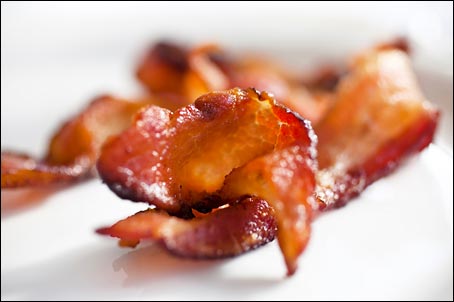Get Them to Read What’s Next
The whole point of writing any sentence is…to get your reader to read the next one!
Yep. It’s that simple. (Not necessarily easy, but simple, yes.)
Your headline or title is the first thing anyone ever reads. So make sure it does its job!
A couple of things to consider:
- Write your final title or headline last. You may start with working title when you begin, but come back to it and polish it before you publish.
- Write for humans first, search engines second. Yes, keywords are important for SEO. But most blog posts and content gets shared by humans, not Google.
- Make sure your content lives up to the headline. Your title is a “promise” of sorts. You’re promising to tell your reader something. Make sure you do, or they won’t be back for more.
Okay, with those three points out of the way, here are some specific tips on crafting headlines and titles:
Use Curiosity
Start with a bit of mystery. Start with Why. As in…Why New Moms Need a Nanny to Stay Sane. Or, Why Your Bank is Charging You More than it Should. It’s just basic human nature. We’re curious. Use that to your advantage. (And yes, you could also start with What, Who, When or How for the same reasons.)
State the Big Promise (or Benefit)
Your number one selling point should be up front. It helps your perfect customer self-select themselves and prepares them to respond. Plus, if they read nothing else, they have at least seen the best selling point you have to offer. If you have trouble writing this kind of headline, it’s a sure sign you need to think a bit more about your product or service. Here are a few examples:
- Start your own business and quit your job in 90 days
- Create your own website in 24 hours or less
- Double your leads from in-person networking
Announce Some Exciting News
We read newspapers and magazines because we love news. We not only want to know, we need to know. Writing your headline in a way that suggests news, rather than advertising, can have the same powerful appeal of a feature story in the morning paper. An important note: the product or service doesn’t necessarily have to be newly created to qualify as news. It merely has to be news to your reader.
Ask a Question
When our brains hear (or read) a question, they can’t help but try to answer it. If the question is applicable to our lives (and we don’t already know the answer), it’s a sure-fire way to get us to read further. You could use something like Do You Make These Mistakes While Networking? or Do You Need to Learn Chinese for Your Next Job?
Use Numbers
One of the most popular structures for a blog or article title is the Numbered List. As in, 101 Ways to Bring Romance Back to Your Marriage. These kinds of headlines are popular because they’re specific. They let your reader know what to expect. But don’t overuse this strategy. These are good every once in awhile.
Also, the larger the number, the more you may impress or intrigue someone — enticing them to read and discover your vast knowledge and authority.
The More You Write (Headlines), the Better You’ll Get
The practice of writing great titles applies to more than just your blog posts. You can (and should) keep these tips in mind for all your writing. Great headlines (that make people go clickety-click!) can be found in your email subject lines, your tweets, and even your Facebook posts.
There’s a great tool out there that was created by Jon Morrow of Copyblogger. It’s called Headline Hacks, and you can download it for free here. (I get nothing out of sending you there. I just really like the tool.) Be cautious tho — avoid hyperbole and over exaggeration. Your content MUST fulfill the promise of your headline or you’ll lose the trust of your readers fast.
So write your headline. And yes, now you can publish that blog post.

